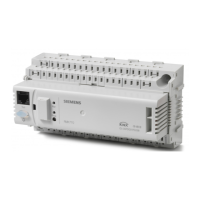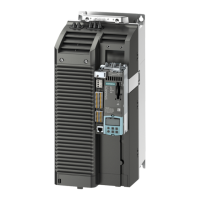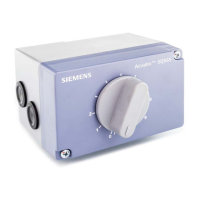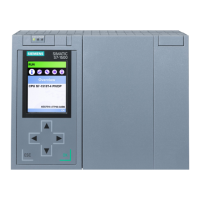67/232
Building Technologies Boiler sequence controller RMK770 CE1P3132en
HVAC Products 5 General functions, fundamentals 23.04.2009
To enable a mixing circuit to control its flow temperature to the setpoint, it requires a
higher flow temperature on the inlet side. This elevated temperature can be adjusted
separately for each mixing circuit.
In the case of maintained boiler return temperature with mixing valve, this elevated
temperature is not needed. Here, it must be made certain that the minimum boiler
temperature is somewhat higher than the return temperature setpoint.
For all types of control by the mixing valve (maintained boiler temperature control,
primary controller, heating circuit), the same PI mixing valve algorithm is available.
5.7.2 Setting aids
With the help of the P-band (Xp) and the integral action time (Tn), the mixing valve
algorithm can be ideally adapted to the relevant controlled system.
The controller is supplied with the control parameters set to values suited for the major-
ity of controlled systems (typically flow temperature control with a 3-port mixing valve).
In the case of difficult controlled systems (e.g. heating circuit with heat exchanger), the
control parameters must always be matched to the controlled system.
T
T
A controlled system is usually characterized by the step response. This is explained in
the following example of a mixing heating circuit.
At the point in time t
o
, the actuating device (actuator of mixing valve) shall be opened
from 40 to 80%. As a result, the flow temperature increases by x.
Δ
x
Tu Tg
ΔY
3131D25
Valve position
Actual value
Valve position must
change rapidly (manually)
Tu Delay time
Tg Compensating time
x Change of actual value
Y Change of valve position
The longer the delay time in relation to the system time constant, the more difficult the
control of the system. If the position of the actuating device is changed and the tem-
perature sensor can only acquire the result of the change after a certain period of time,
control is much more difficult than in the case of fast-acting systems.
The degree of difficulty
λ is calculated as follows:
Tu
λ =
Tg
For the degree of difficulty of a controlled system, the following guide values can be
used:
λ <0.1 = easy
λ 0.1…λ 0.3 = medium
λ >0.3 = difficult
Setting choices
Setting with the help
of the step response
Degree of difficulty
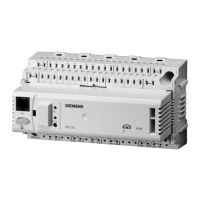
